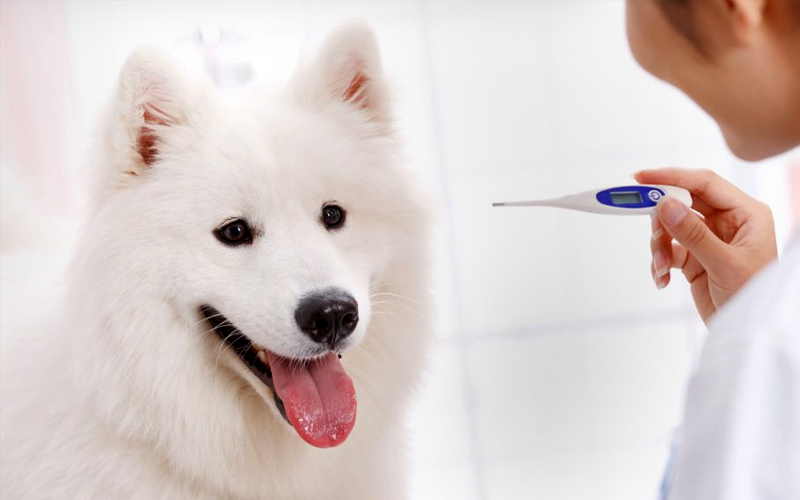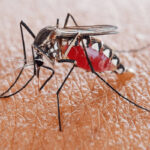If you’re new to dog ownership and want to ensure your furry friend grows up healthy and strong, then you’ve come to the right place. In this article, we’ll be sharing some valuable tips and tricks on how to care for your pup, covering everything from health standards to grooming and nutrition. So, without further ado, let’s get started on helping your canine companion thrive!
1. Health Standards for Dogs
Soft and Shiny Coat
 A healthy dog with a soft and shiny coat
A healthy dog with a soft and shiny coat
One of the most visible signs of a healthy dog is its coat. A dog in good health will typically have a soft, shiny, and smooth coat, free from tangles and bald spots (except during seasonal shedding or for pregnant dogs). Additionally, their skin should be supple and free from irritation, parasites, or unusual lumps.
Choose the Right Shampoo: It’s important to use a dog-specific shampoo when bathing your pup. Human shampoos are not suitable as they can disrupt the natural pH balance of a dog’s skin. Opt for a gentle, canine-formulated shampoo, and if in doubt, consult your veterinarian for recommendations.
 Choose a dog shampoo that suits your pup’s coat type
Choose a dog shampoo that suits your pup’s coat type
Bath Time Best Practices: Contrary to popular belief, dogs do not need frequent baths. Once a week is usually sufficient. Over-bathing can strip their skin of natural oils, leading to dryness and skin issues. Always remember to thoroughly dry your dog’s coat after a bath to prevent skin problems.
 Proper drying techniques are important for your dog’s coat health
Proper drying techniques are important for your dog’s coat health
Grooming Tips: Regular brushing is essential to maintaining a healthy coat. Brush your dog’s fur gently, following the direction of hair growth. Start from the head and work your way down, removing any loose hair. Different dog breeds may require specific grooming techniques, so be sure to research your dog’s particular needs.
 Regular brushing keeps your dog’s coat healthy and tangle-free
Regular brushing keeps your dog’s coat healthy and tangle-free
No Unusual Physical Symptoms
Eyes: A dog’s eyes should be bright and clear, with no signs of discharge, cloudiness, or injury. The pupils should be equal in size, and the whites of the eyes should not appear bloodshot or inflamed.
 Healthy dog eyes are bright and clear
Healthy dog eyes are bright and clear
Ears: A healthy dog’s ears should be free from excessive wax, pain, or itching. There should be no unusual discharge, and the inner ear should be free from hair and skin debris.
Teeth and Gums: A dog’s teeth should be clean and free from tartar buildup. The gums should be pink and firm, with no signs of swelling or bleeding. Bad breath can be a sign of dental issues or gum disease, so regular dental checkups are important.
Nose: A dog’s nose is typically wet and cool to the touch. It should be free from discharge, crusting, or sores. A dry nose can be a sign of dehydration, so ensure your pup always has access to fresh water.

Anal Glands and Elimination: A dog’s anal glands should be expressed regularly to prevent impaction. Check for any unusual discharge or swelling in the anal area. Additionally, monitor your dog’s elimination habits for any signs of diarrhea, constipation, or blood in the stool, as these can indicate health issues.
Vital Signs: Temperature, Heart Rate, and Respiratory Rate
Temperature: A dog’s normal body temperature ranges from 37.5°C to 38.5°C (99.5°F to 101.3°F). Puppies, pregnant dogs, and older dogs may have slightly different temperature ranges. Take your dog’s temperature when they are calm and relaxed for the most accurate reading.
 Monitor your dog’s temperature, heart rate, and respiratory rate regularly
Monitor your dog’s temperature, heart rate, and respiratory rate regularly
Heart Rate: A resting dog’s heart rate typically falls between 70 and 120 beats per minute. Puppies and small breeds may have slightly higher heart rates. An elevated heart rate can be a sign of pain, anxiety, or other health issues, so consult your vet if you’re concerned.
Respiratory Rate: A healthy dog’s respiratory rate at rest is usually between 10 and 30 breaths per minute. Puppies and small breeds may breathe faster due to their higher metabolism. Labored breathing or abnormal respiratory sounds should be evaluated by a veterinarian.
Stable Digestive System
Digestion Time: On average, it takes a dog’s body about 23 hours to fully digest a meal. This can vary depending on the type of food and the individual dog’s metabolism. Puppies and senior dogs may have slightly different digestion times.
 A stable digestive system is key to your dog’s overall health
A stable digestive system is key to your dog’s overall health
Signs of Digestive Health: You can assess your dog’s digestive health by observing their teeth and stool. Healthy teeth indicate proper chewing and digestion, while well-formed, firm stools indicate proper nutrient absorption. Any changes in your dog’s digestion, such as diarrhea or constipation, should be addressed by a veterinarian.
2. Caring for Newborn Puppies
The first few weeks of a puppy’s life are crucial for their development. Newborn puppies are completely dependent on their mother for nourishment and care. They spend most of their time sleeping and nursing, so it’s important to ensure the mother has an adequate milk supply.
 Caring for newborn puppies requires attention to their nutritional and developmental needs
Caring for newborn puppies requires attention to their nutritional and developmental needs
Developmental Milestones: Around the 3-week mark, puppies start to develop their senses and become more curious about their surroundings. They begin to explore their environment and play with their littermates. This is also when they start teething, so they may show interest in their mother’s food.
Socialization and Exploration: Between 6 and 8 weeks of age, puppies enter a critical period for socialization. Exposure to new people, places, and experiences during this time will help them develop into well-adjusted adult dogs. A healthy and stimulating environment is key to their development.
3. How to Promote Healthy Growth at 3 Months Old
 Proper nutrition and exercise are key to promoting healthy growth in 3-month-old puppies
Proper nutrition and exercise are key to promoting healthy growth in 3-month-old puppies
Nutrition: Puppies experience their fastest growth rate between 2 and 3 months of age. During this time, they are also developing important physical and cognitive skills. A balanced diet with proper portions and nutrient content is crucial. Puppies at this age are prone to digestive issues, so monitor their stool consistency and consult your vet if you notice any changes.
Feeding Schedule: It’s recommended to feed puppies three times a day up until they are 6 months old. Divide their daily food intake into three equal meals and avoid overfeeding. Always provide fresh water and ensure they get enough exercise to aid digestion.
 Provide a balanced diet with high-quality puppy food
Provide a balanced diet with high-quality puppy food
Types of Food: Offer a variety of fresh, high-quality puppy food, including meat, organs, and bones, or opt for commercial puppy food that meets their nutritional needs. Avoid feeding puppies cow’s milk as it can cause digestive issues. You can also introduce small amounts of dry food or kibble to help reduce stool odor.
Cooked vs. Raw Food: Cooked food is generally easier for puppies to digest and reduces the risk of parasitic infections. If you choose to feed a raw diet, gradually introduce it, starting with lightly cooked or blanched meat. Always provide fresh water, and you can offer a small amount of milk or diluted milk replacement in the evenings.
Supplements: To promote healthy growth, consider adding calcium and protein supplements to your puppy’s diet. Consult your veterinarian for recommendations on safe and effective supplements. Additionally, ensure your puppy is up to date with their vaccinations and deworming schedule.
4. How to Continue Healthy Growth After 6 Months Old
 Continue to provide a balanced diet and adequate exercise for healthy growth after 6 months old
Continue to provide a balanced diet and adequate exercise for healthy growth after 6 months old
Nutrition: After 6 months of age, you can start introducing more variety into your puppy’s diet, including raw or lightly cooked meat, such as chicken, beef, or horse meat. Some larger breeds, like German Shepherds, may benefit from a raw diet. Monitor their eating habits and adjust portions as needed.
Mealtime Tips: Keep mealtimes short and sweet, aiming for no more than 5 minutes per meal. Remove any uneaten food and rinse the bowl afterward. You can use treats to encourage a healthy appetite, but be mindful not to overfeed.
Average Lifespan Varies by Breed
The average lifespan of a dog varies depending on its size and breed. Smaller breeds, such as Poodles, Pugs, and Huskies, tend to live longer, with an average lifespan of around 14 years. Larger breeds, on the other hand, typically have shorter lifespans, averaging around 8 years. As your dog ages, adjust their diet to meet their changing nutritional needs.
Nutritional Considerations for Senior Dogs: As your dog enters their senior years, their nutritional requirements will change. Consult your veterinarian for advice on senior dog food options or supplements to support their joints, heart, and cognitive function.
 Senior dogs have different nutritional needs and may require supplements
Senior dogs have different nutritional needs and may require supplements
Dairy Products: Yogurt and other dairy products that are rich in probiotics can be beneficial for your dog’s digestion. However, avoid flavored or sweetened dairy products, as these can cause digestive issues and weight gain.
Heat Cycles and Pregnancy: Female dogs typically go into heat twice a year, and their pregnancy lasts around 58-68 days. During pregnancy, it’s crucial to provide extra calcium and increase food portions by about 30%. Avoid spicy, fatty, or heavily seasoned foods, as these can cause digestive issues and skin problems.
Adjusting Food Intake: Monitor your dog’s stool consistency and adjust their food intake accordingly. If their stool is loose or watery, reduce the amount of fat and protein in their diet.
 Adjust food portions to prevent obesity and related health issues
Adjust food portions to prevent obesity and related health issues
Obesity Prevention: If your dog is sedentary, reduce their food portions to prevent obesity. Obesity can lead to serious health issues, including joint problems, heart disease, and respiratory difficulties, especially in short-legged and large breeds.
Vaccinations and Deworming
It’s important to keep a health record for your dog to track their vaccinations and deworming schedule. Puppies under 6 months old should be dewormed at least once a month, while adult dogs should be de
health-and-life/is-drinking-plain-water-or-tea-better-for-longevity/’ title=’Is Drinking Plain Water or Tea Better for Longevity?’>Is Drinking Plain Water or Tea Better for Longevity?
Why You Need a Mosquito Bat This Rainy Season
“Mosquitoes are a nuisance and a health hazard, especially during the rainy season when they breed prolifically. It is imperative to take proactive measures to curb their reproduction and eradicate their presence. This rainy season, arm yourself with an effective mosquito bat to keep these pests at bay and ensure the well-being of your family.”
The Magic of Scented Orchids: A Guide to Cultivating and Caring for These Fragrant Flowers
“Orchid Dendrobium is a stunning and vibrant orchid species with an extensive range of colors. In this article, we will delve into the fascinating world of this exquisite plant and explore its beauty and unique characteristics. Join us on this journey as we uncover the secrets of the enchanting Dendrobium orchid.”






































